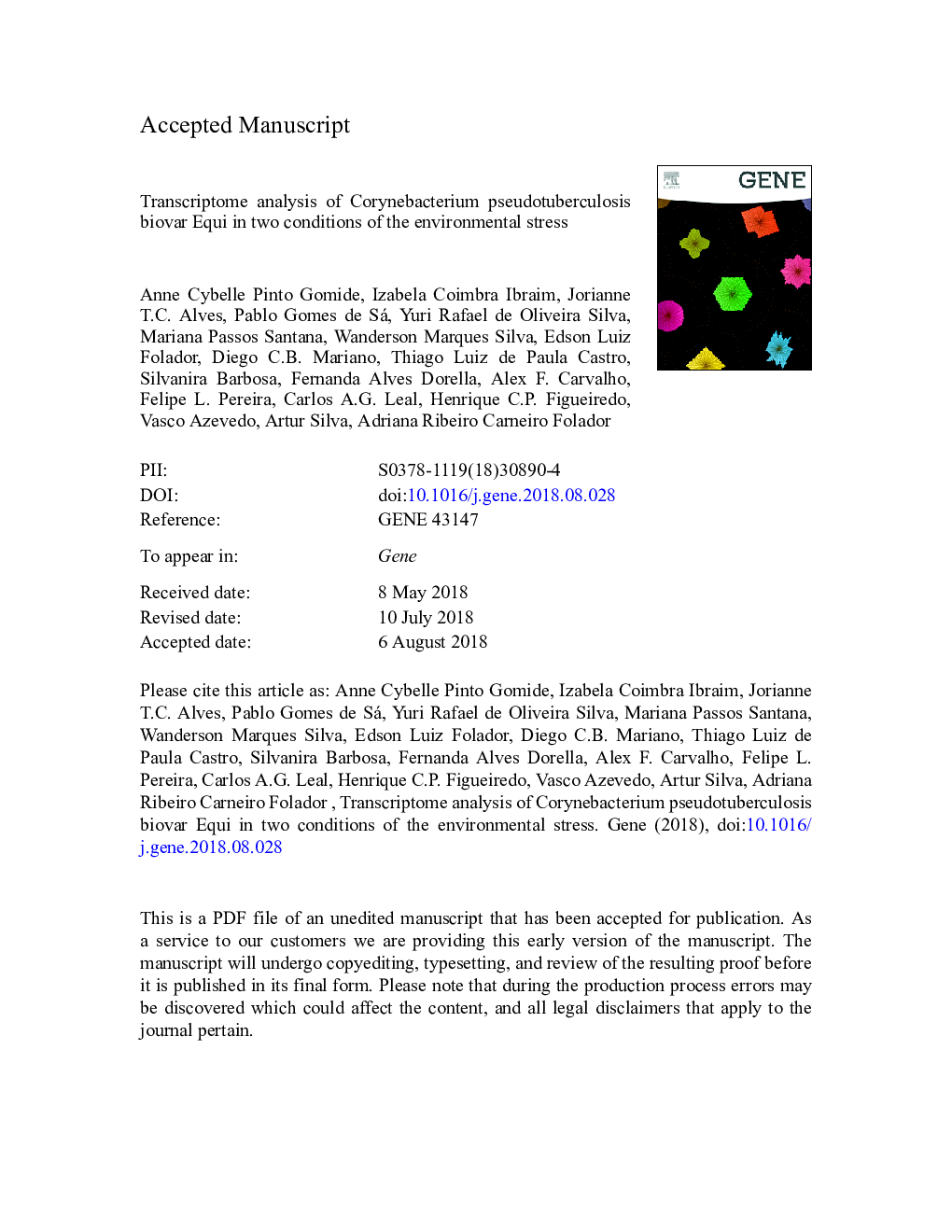| Article ID | Journal | Published Year | Pages | File Type |
|---|---|---|---|---|
| 9955313 | Gene | 2018 | 51 Pages |
Abstract
Corynebacterium pseudotuberculosis has been widely studied in an effort to understand its biological evolution. Transcriptomics has revealed possible candidates for virulence and pathogenicity factors of strain 1002 (biovar Ovis). Because C. pseudotuberculosis is classified into two biovars, Ovis and Equi, it was interesting to assess the transcriptional profile of biovar Equi strain 258, the causative agent of ulcerative lymphangitis. The genome of this strain was re-sequenced; the reassembly was completed using optical mapping technology, and the sequence was subsequently re-annotated. Two growth conditions that occur during the host infection process were simulated for the transcriptome: the osmotic and acid medium. Genes that may be associated with the microorganism's resilience under unfavorable conditions were identified through RNAseq, including genes present in pathogenicity islands. The RT-qPCR was performed to confirm the results in biological triplicate for each condition for some genes. The results extend our knowledge of the factors associated with the spread and persistence of C. pseudotuberculosis during the infection process and suggest possible avenues for studies related to the development of vaccines, diagnosis, and therapies that might help minimize damage to agribusinesses.
Keywords
Related Topics
Life Sciences
Biochemistry, Genetics and Molecular Biology
Genetics
Authors
Anne Cybelle Pinto Gomide, Izabela Coimbra Ibraim, Jorianne T.C. Alves, Pablo Gomes de Sá, Yuri Rafael de Oliveira Silva, Mariana Passos Santana, Wanderson Marques Silva, Edson Luiz Folador, Diego C.B. Mariano, Thiago Luiz de Paula Castro,
